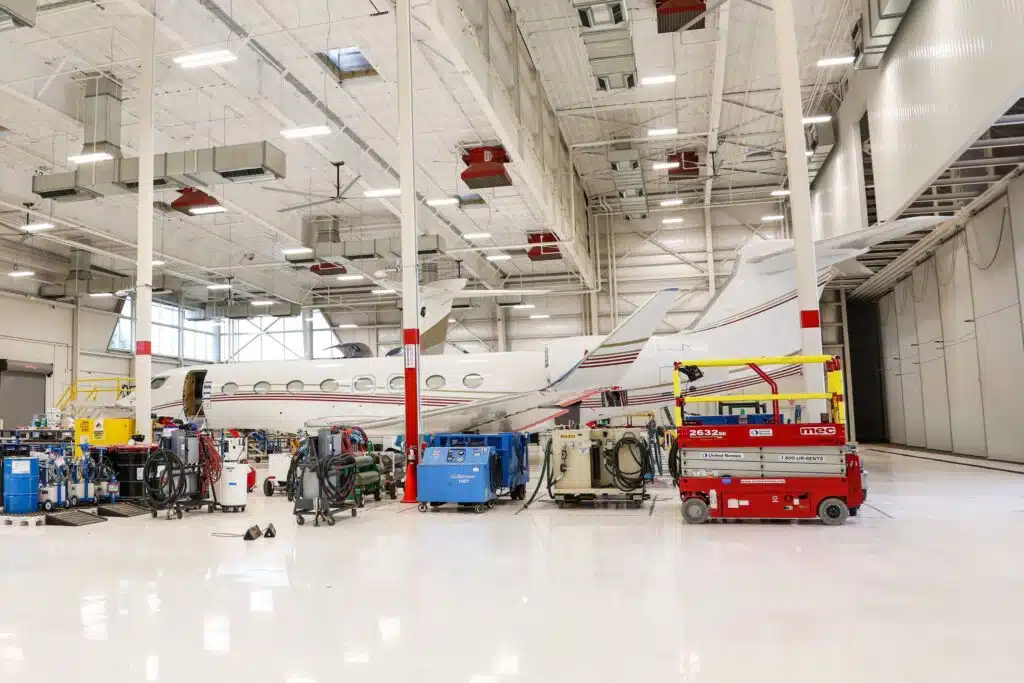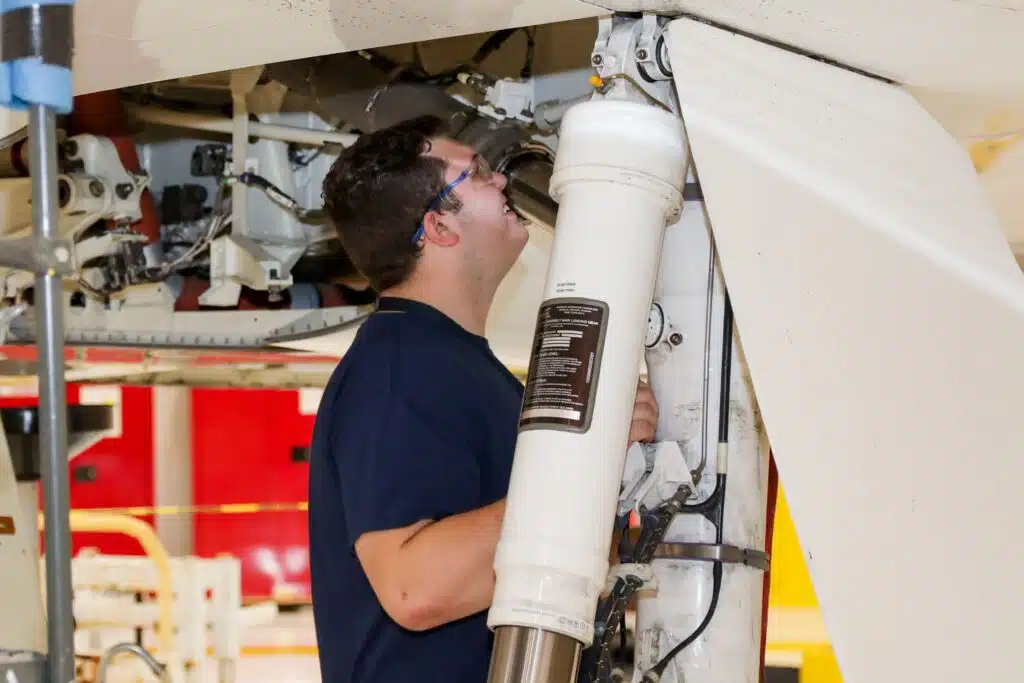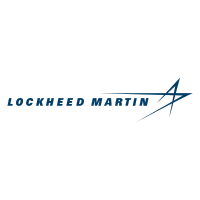
The Future of Aerospace & Defense
2024 Report
Greater Phoenix and Arizona have long been pillars of the U.S. aerospace and defense (A&D) industry, a sector distinguished by its strategic significance and impact. The robust local A&D landscape is one of the largest in the nation, marked by an established military presence and considerable private employers, garnering the eighth-highest Department of Defense (DoD) funding rate per capita in the country. Its development traces back to the mid-20th century and includes large bases such as Davis-Monthan Air Force Base, Fort Huachuca, Luke Air Force Base and Marine Corps Air Station Yuma.
In July 2024, Greater Phoenix Economic Council (GPEC) engaged regional A&D experts to discuss the strengths and future opportunities within the sector. The insights gathered have been instrumental in shaping the strategic direction contained in this report.
66,000+
Employees
4%
Regional GPD
$2,336
DoD Funding Per Capita
Major A&D Employers
The industry’s gross regional product (GRP) is more than $8 billion, increasing 28% between 2018 and 2023, now representing nearly 4% of the region’s GRP. There are more than 2,400 payrolled A&D businesses in Greater Phoenix, a 42% increase since 2018, and the top five companies alone employ nearly 20,000 people in the region.[1]
Company |
Description |
Greater Phoenix Employees |
Honeywell |
Manufacturer of A&D products and solutions |
7,175 |
Boeing |
Commercial and military aircraft manufacturer along with corresponding in-flight and ground-based products and systems |
5,208* |
Northrop Grumman |
Manufacturer of A&D products and solutions |
3,618 |
General Dynamics |
Commercial and military aircraft and vehicle manufacturer along with corresponding in-flight and ground-based products and systems |
2,321 |
Axon Enterprise |
Military, law enforcement and civilian weapons and technology manufacturer |
1,018 |

Job Growth
The A&D industry engages a large workforce in Greater Phoenix, currently employing over 66,000 individuals – an increase of almost 12% since 2018. The local ecosystem growth is projected to continue, with 3,000 additional jobs expected by 2028.[2]
Recent Announcements
2023 Metric |
Data Point |
Regional Context |
5-Year Local Industry Growth Trend |
5-Year National Industry Growth Context |
Employment |
66,428 |
2.6% of regional jobs |
11.6% |
13.5% |
Payrolled Business Locations |
2,417 |
1.7% of regional pay rolled businesses |
42.5% |
29.8% |
Average Earnings per Job |
$117,300 |
1.3x higher than regional average |
25.2% |
17% |
Gross Regional Product (GRP), 2022 |
$8.6B |
3.7% of regional GRP |
28.3% |
31.5% |
DoD Awards in Arizona (per capita) |
$2,336 |
15% of all federal government spending |
31.1% |
27.9% |
Strategies Driving Future Success
Advance Tax & Regulatory Environment
To further the trajectory of industry success, the state should continue to nurture the tax and regulatory environment in Arizona, which will support the success of large, established A&D companies. Arizona continually supports policy to ensure the state maintains its competitive position through programs including the Research and Development (R&D) Tax Credit and HB2822, which reduces personal property tax liability and enhances ongoing regulatory reforms.
Advance Arizona Space Commission
Arizona needs a multi-dimensional industry, academia, and government-led commission to focus on near-term technology and R&D opportunities, and capital and physical infrastructure to support emerging sector opportunities within A&D. Additionally, a fund should be established for the commission to effectively advocate for the space industry through state-sponsored economic development programs and federal funding opportunities.
Continue Military Base & Mission Support
Arizona, its elected officials and the A&D industry as a whole must continue supporting military bases and mission operations in the state to ensure stability and avoid potential base realignment and closures. In Arizona, major military operations like Luke Air Force Base have an economic impact of $15.28 billion and employ over 78,000 people.[3]
Specific to the A&D industry, bases can be rich sources of skilled, experienced talent. They also provide crucial access to the testing facilities, ranges and platforms necessary for the development of new defense technologies.
Develop Key Emerging Technology Sectors
In 2022, the DoD identified 14 critical A&D related technology areas vital to maintaining U.S. national security.[4] As part of GPEC’s emerging industries strategy, the organization is focused on cultivating development in six of the 14 technology areas based on regional assets such as current job growth, future job growth, higher education availability and existing regional employers. These six areas are space technology, future generation wireless technology (FutureG), trusted AI and autonomy, microelectronics, biotechnology, and human-machine interfaces.
Emerging Opportunities

Space Technology
Space technology development is focused on space flight, space communication and other technologies needed to maintain orbital operations. Greater Phoenix’s collaborative environment fueled by public-private partnerships supports growth within these segments. Arizona State University (ASU) ranks third nationally in NASA-funded research and recently signed a memorandum of understanding with the U.S. Space Force which selected ASU as a partner in connecting students and graduates with internships and job opportunities.[5] Additionally, the space commission established in 2024 through House Bill 2254 should assist with consolidating and coordinating the state’s space efforts.

FutureG
FutureG, or future generation wireless technology, encompasses a suite of cutting-edge wireless network technologies, such as the development of 5G. Greater Phoenix is often a test market for FutureG mobile connectivity technology and many large telecommunication providers such as Verizon and AT&T tested 5G in the market. Early access to these technologies has led to increased funding opportunities, including a $10 million DoD award to ASU in 2023 to establish a Center of Excellence in Future Generation Wireless Technology.[6] FutureG includes sub-opportunities such as integrated network systems of systems, technology that allows communication and real-time dissemination of information, and integrated sensing and cyber.
Trusted AI & Autonomy
Artificial intelligence is the software engineering discipline expanding the capabilities of software applications to perform tasks that currently require human intelligence. Autonomy is the engineering discipline that expands robots’ abilities to perform tasks while limiting the need for human interaction. Regionally, trusted AI and autonomy is seeing rapid growth in advanced air mobility (AAM) and eVTOLs, including leading companies such as Honeywell Aerospace paving the way to move transportation from road to air through its AAM Lab.
Microelectronics
- Microelectronics is the development and production of circuits and components that serve as the brain of humanmade electronic systems.
- Greater Phoenix’s semiconductor ecosystem is home to many firms producing chips for the electronics, telecommunications and networking fields including Intel, Microchip, Onsemi, and TSMC which together employ over 19,000 people.[7]
- ASU and University of Arizona (UofA) are heavily involved in the microelectronics space with ASU offering a Certificate in Semiconductor Processing and UofA operating the National Science Foundation and Semiconductor Research Corporation-funded Center for Environmentally Benign Semiconductor Manufacturing.
Biotechnology
- Biotechnology is the engineering discipline in which technologies and capabilities are produced using living systems, an essential component in helping A&D stay ahead of global changes.
- Arizona is an emerging biotechnology hub with cuttingedge research in precision medicine, neurosciences, biomarker identification and immunotherapies.
- From 2018 to 2023, $397 million in capital was invested in regional bioscience companies.
Human-Machine Interfaces
- Human-machine interfaces refers to the interaction between humans and machines, particularly regarding human-machine teaming and augmented and virtual reality.
- Greater Phoenix is well positioned and growing, with 49 companies conducting research in human-machine interfaces, primarily in flight and drone training and research centers.
- The region’s clinical and research strengths in the field of neurology, such as the ongoing Neuralink trial at Barrow Neurological Institute, could bolster this cutting edge field.
Download the PDF on the Future of Aerospace & Defense in Greater Phoenix.
Industry Expert
Ashley Busada, CEcD
Vice President, Business Development
[1] Lightcast Q3 2024 | Table: MAG 2022 Employer Database, Boeing.com | *State employment [2] Lightcast Q3 2024 | Table: Lightcast Q3 2024; USA Spending.gov | [3] Arizona Military Affairs Commission | [4] These 14 critical technologies are Biotechnology, Quantum Science, Future Generation Wireless Technology (FutureG), Advanced Materials, Trusted AI and Autonomy, Integrated Network Systems-of-Systems, Microelectronics, Space Technology, Renewable Energy Generation and Storage, Advanced Computing and Software, Human-Machine Interfaces, Directed Energy, Hypersonics, and Integrated Sensing and Cyber. | [5] U.S. Space Force | [6] Arizona State University | [7] Maricopa Association of Governments 2022 Employer Database
Published: 08/23/2024









